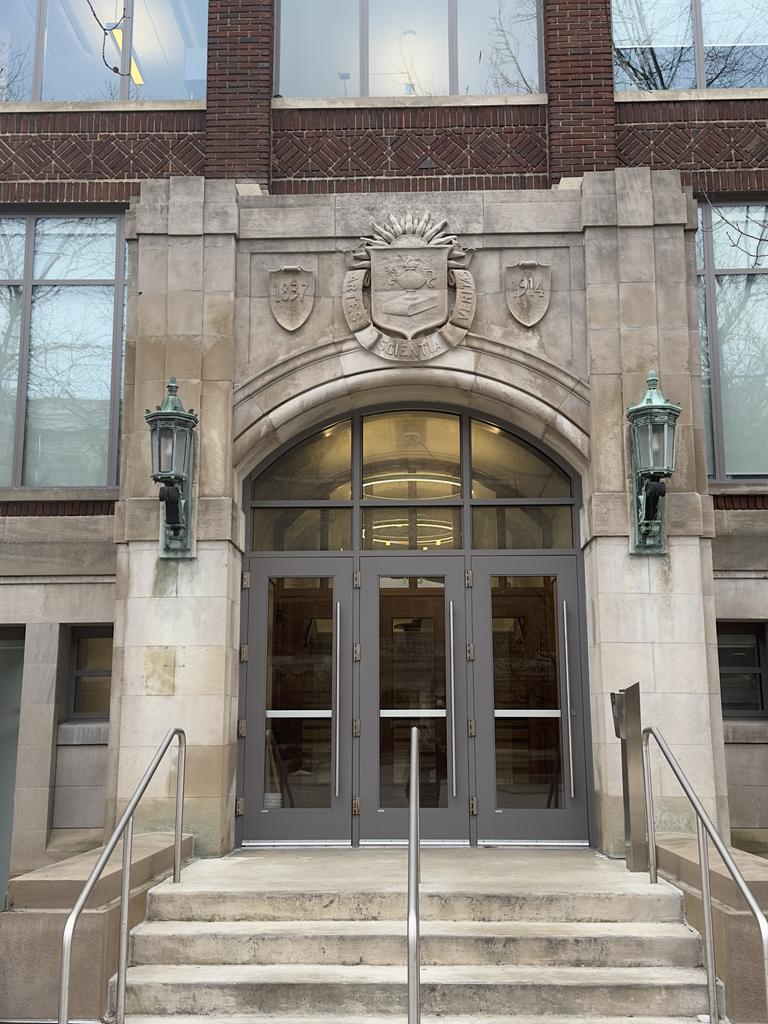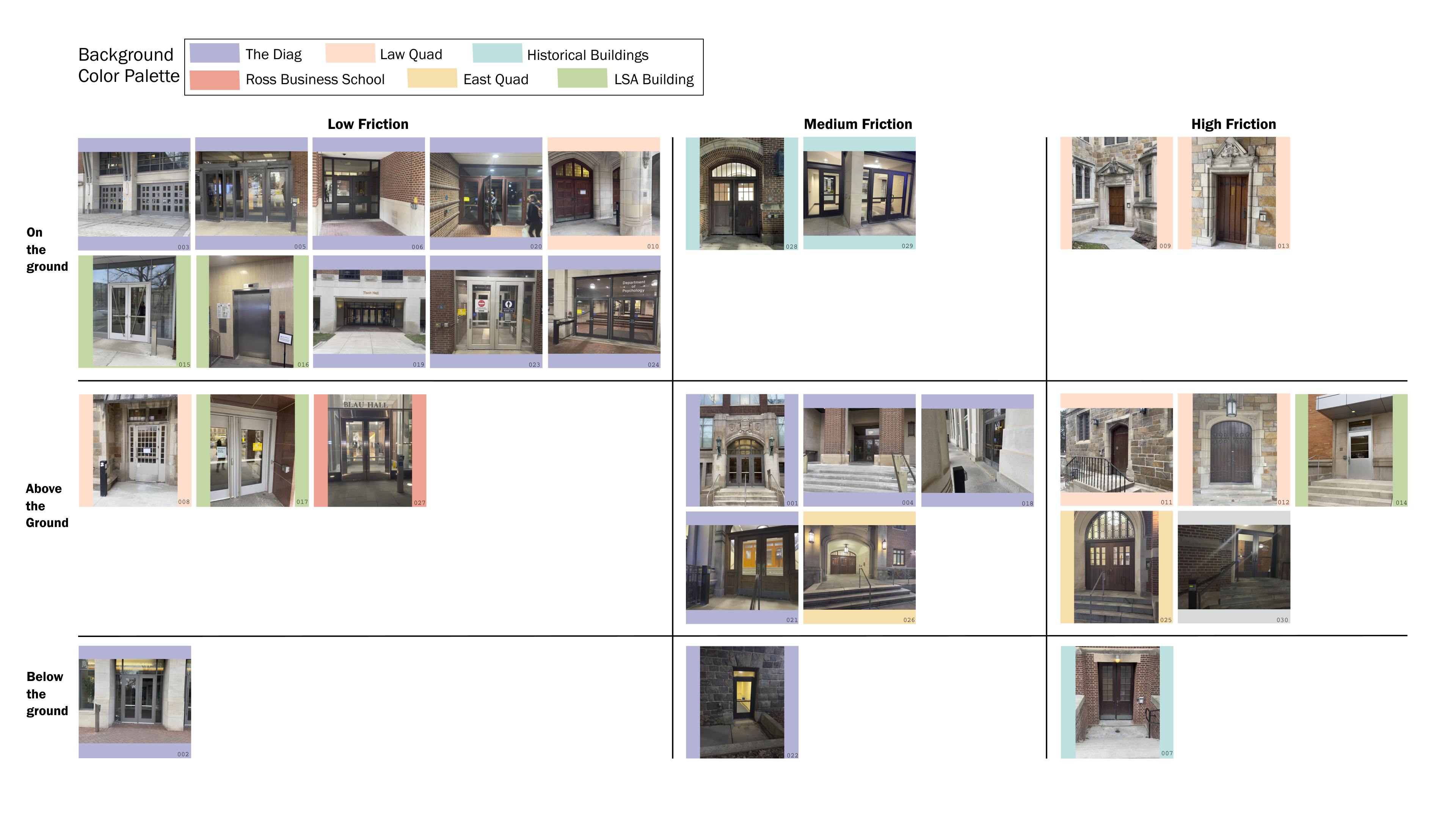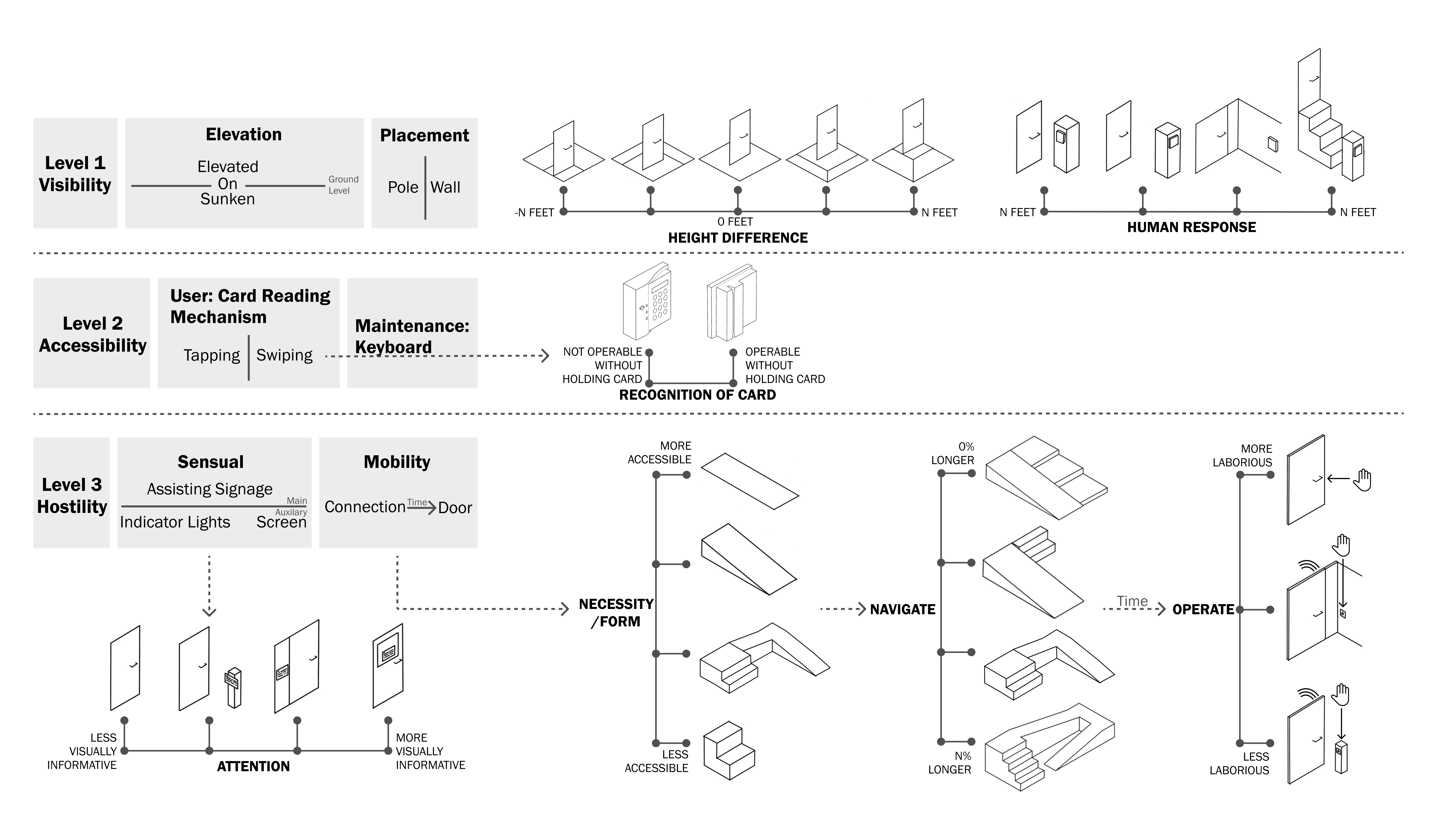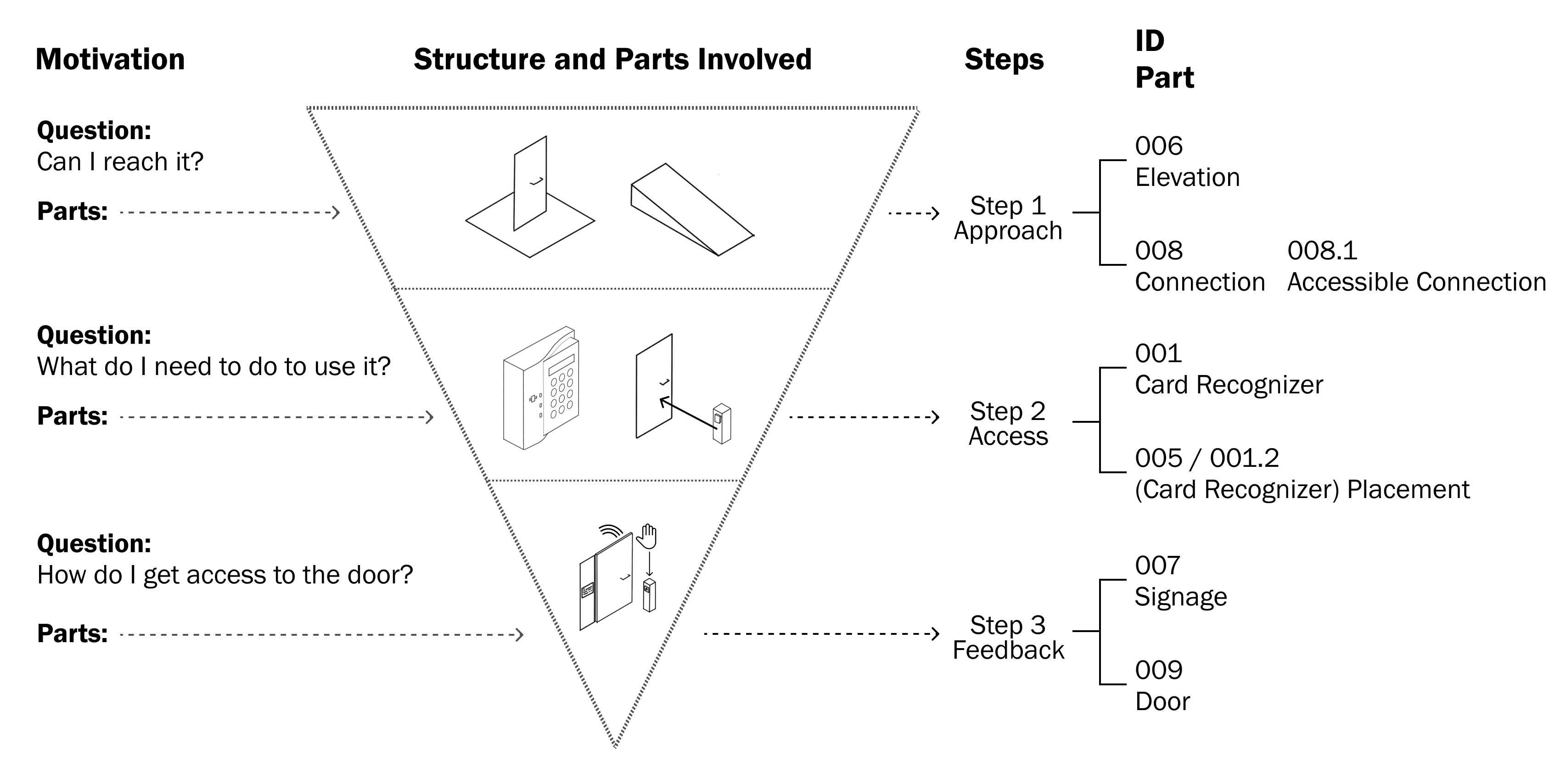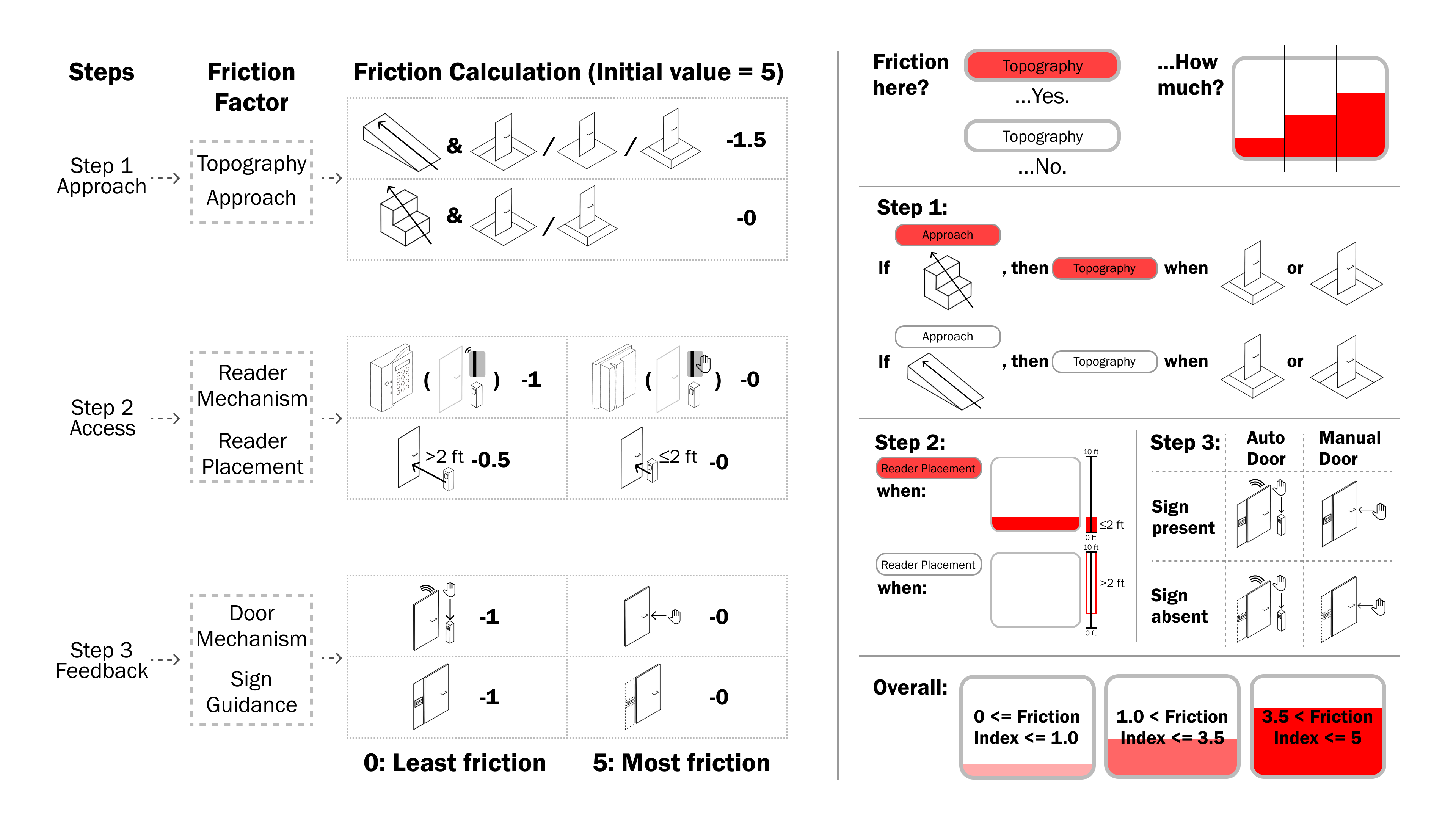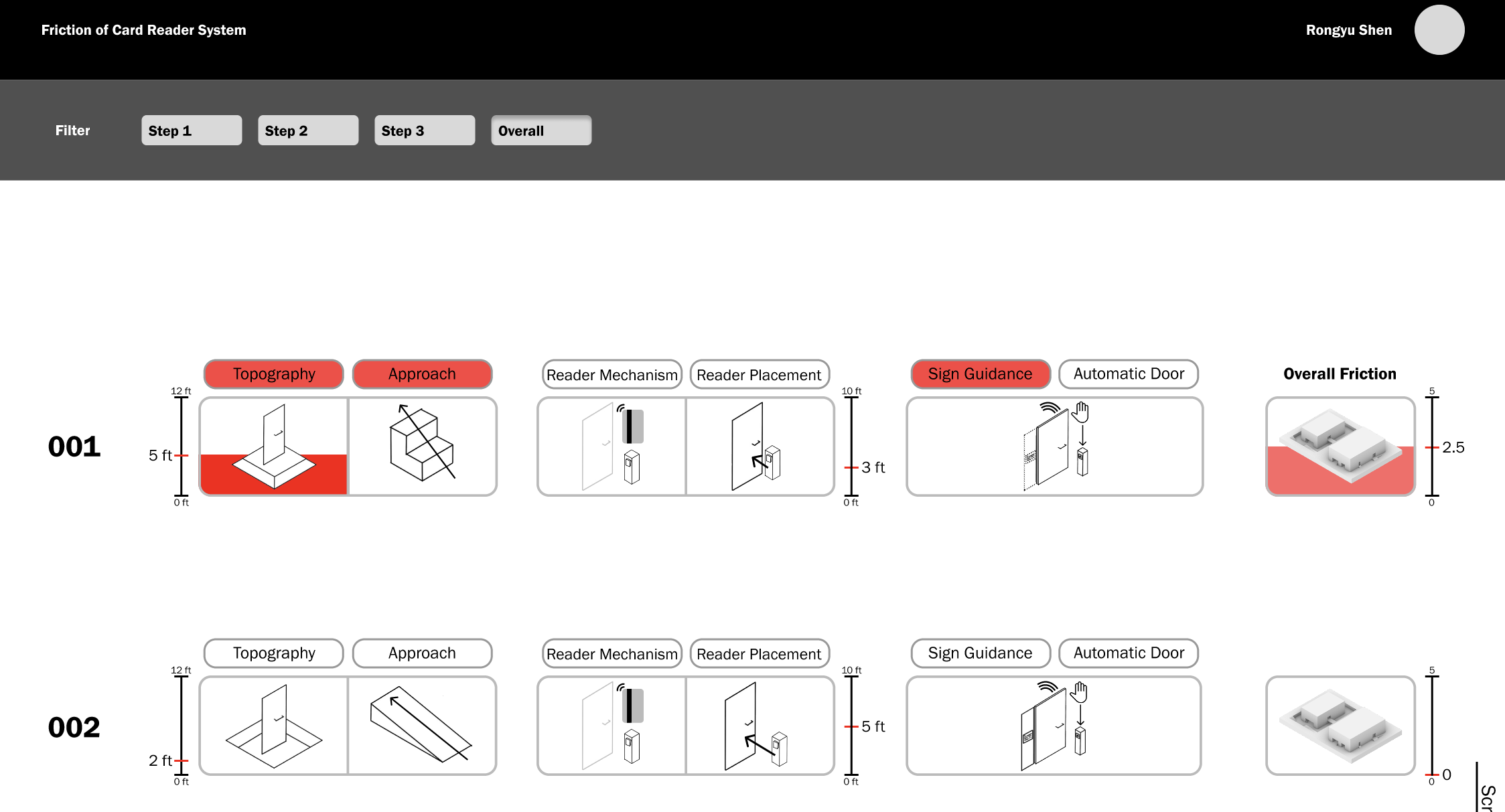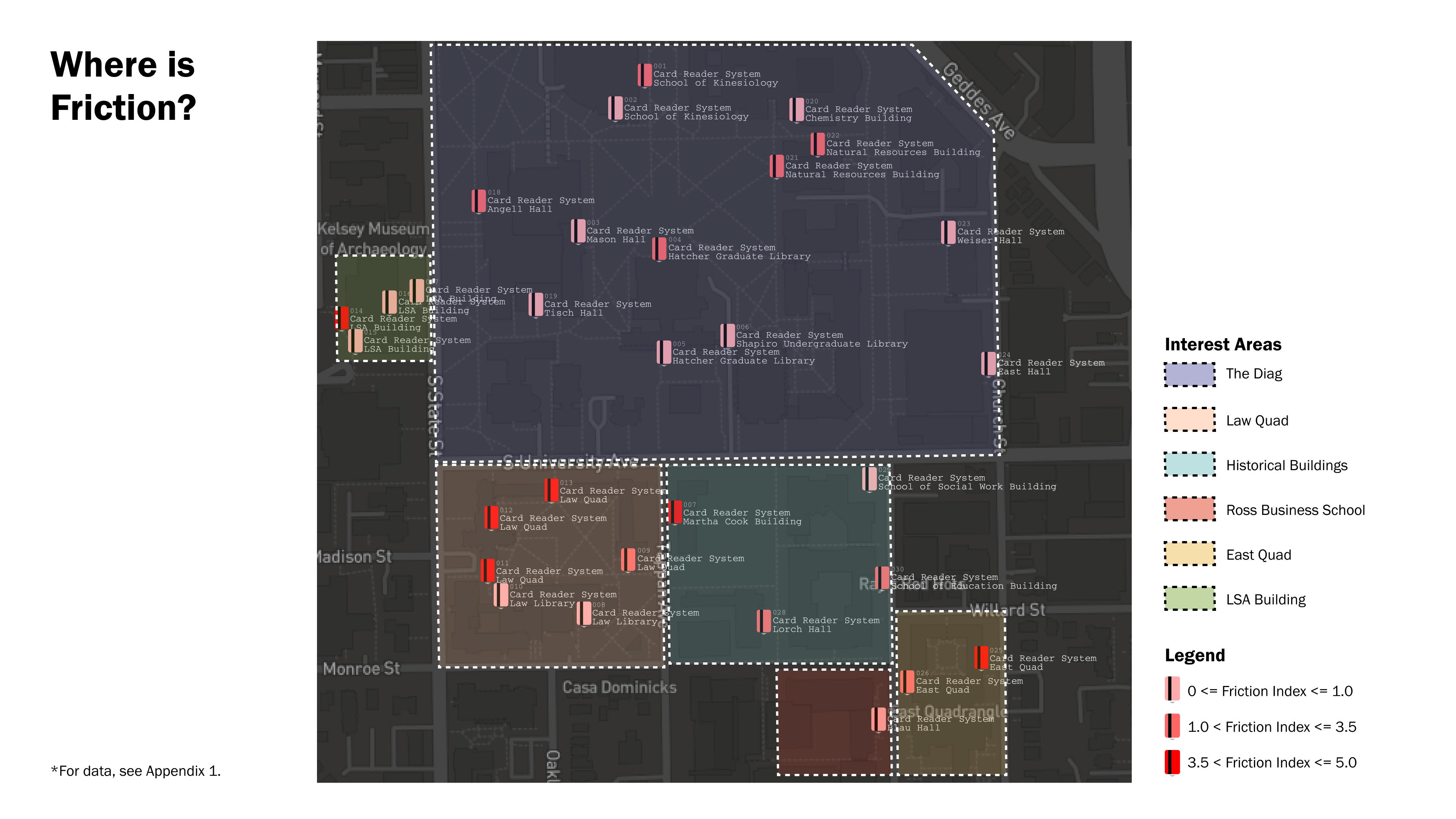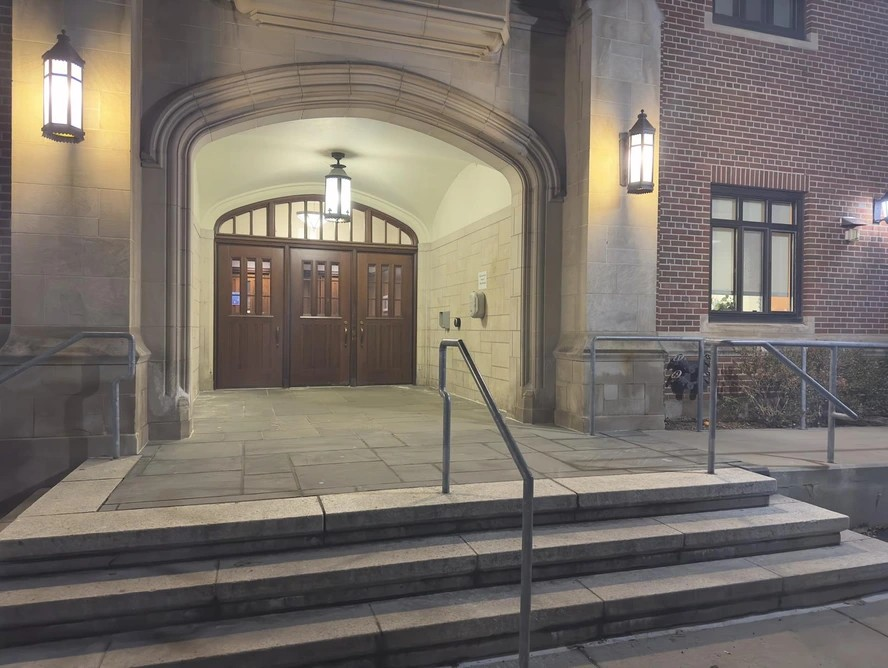MCard Reader System, an identification system deployed within the bounds of University of Michigan, limits building access at specific timeframes to only students and the faculty.
The motivation for choosing this urban object is because of an ACL torn relapse happened to me in 2023. The inevitability of using an accessible built environment informs me of the “friction” that people with mobility issues face at getting access to university facilities.
Although the 1991 Americans with Disabilities Act regulates that each building must have at least one accessible entrance, some of them are either too hard to find or need a long detour comparing to other entrances, etcetera.
The image in this section shows an example of the system.

